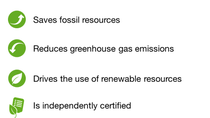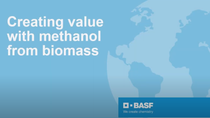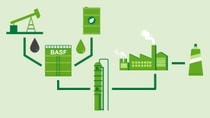Sustainability
BASF’s biomass balance approach
Reduce CO2 emissions and save fossil resources
BASF’s biomass balance approach contributes to the use of renewable raw materials in BASF's integrated production system and can be applied to the majority of BASF's product portfolio.

BASF's biomass balance approach


New: OPPANOL® BMBcert™ Biomass Balanced

Dicykan BMBcertTM
Dicykan serves as a raw material for the production of frames and lenses of eyeglasses, amongst other applications. With the biomass balance approach, BASF found a way to reduce the product carbon footprint of Dicykan by at least 50 percent through exchanging the fossil feedstock with renewable feedstock at the beginning of the value chain. In addition, BASF customers support the shift to a circular economy with Dicykan BMBcert™.
Our biomass balanced product portfolio
The approach is applied to many BASF products, such as superabsorbents, dispersions, plastics and intermediates. The resulting biomass balanced products offer BASF customers a differentiation opportunity such as a quantifiably improved CO2 footprint and savings of fossil resources. Customers can rely on the identical product quality and performance to which they are accustomed to and benefit from a sustainable drop-in solution, making a conscious contribution to environmental protection.









